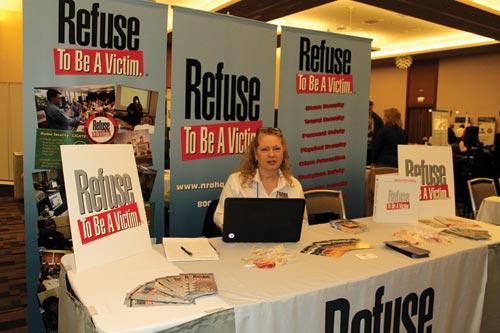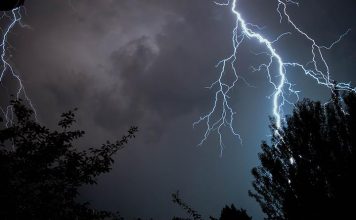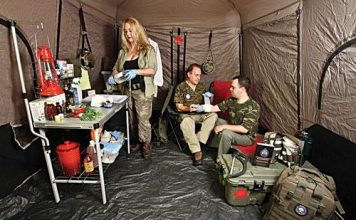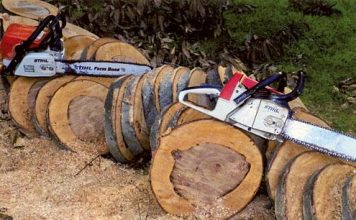 |
|
| Issue #142 • July/August, 2013 |
First, a word of explanation. The reason “gun control” is in quotes in the title and in this sentence is because, for a very long time, the prohibitionists have made it more about control of the general public than about controlling criminal misuse of lethal weapons. Of late, the prohibitionists have played their word-spin again, changing the name of their product to “firearms safety” and “firearms responsibility.”
Um … sorry. You’ll have to look long and hard to find, among the ranks of the prohibitionists, anyone who has actually taught a firearms safety class. Since 1871, the leading firearms safety training entity in the United States and probably the world has been the National Rifle Association, an organization which has been venomously demonized by those who would now usurp all they’ve done to further the disarming of American citizens.
But, enough of partisan semantics. I’ve been asked by the editorial staff to write this particular article because, even though I’m the Firearms Editor and not the Justice System Editor, I became by default the “resident cop” at Backwoods Home. I recently passed the 39 year mark of carrying a badge and a gun for the protection of the public. (I did it part time, which is why I didn’t burn out from it and lasted this long.) Nineteen of those years were spent as chair of the Firearms and Deadly Force Training Committee for ASLET, the American Society of Law Enforcement Trainers, and a partially overlapping 10 years as a member of the Advisory Board of ILEETA, the International Law Enforcement Educators and Trainers Association. I’ve also taught for IALEFI, the International Association of Law Enforcement Firearms Instructors, both stateside and abroad. It’s safe to say that the decades have given me a pretty good handle on what cops think about guns … and about “gun control.”

More than 700 police instructors attended the International Law Enforcement Educators and Trainers conference.
The view from the street
In mid-April of 2013, roughly four months after the atrocity at the Sandy Hook Elementary School in Newtown, Connecticut that triggered the strongest politico-media push for “gun control” in our nation’s history, I was at the annual conference of the above-mentioned ILEETA, attended by more than 700 police trainers from around the nation and the world. I was one of many attending a panel discussion on Active Shooter Response when something interesting happened.
Since the Columbine High School atrocity in 1999, mass murders by gunfire have become known as “active shooter” events. It was pointed out by some of the panelists that this is an unfortunate term; what was really under discussion was immediate response to mass murder. “Active shooter,” historically, has meant someone lawfully using firearms, from a hunter sighting in for deer season to a target shooter at a match to a member of a police department pistol team.
Partway through the discussion, a panel member looked down at a text message on his smartphone, and raised his hand to interrupt. He announced that he had just received a message that the Universal Background Check bill had failed to pass in the United States Senate.
And, spontaneously, the packed classroom of police instructors burst into applause.
While I was at ILEETA, I couldn’t help but notice that NRA had not one but two booths at the concurrent Law Enforcement Vendors Expo. One represented NRA’s Law Enforcement Division, which teaches dozens of police firearms instructors’ schools around the country each year. The other showcased NRA’s firearms safety programs for the public. (One class at ILEETA revolved around a police department that teaches CCW (Concealed Carry Weapon) courses for private citizens, the tuition fees supplementing the agency’s training budget.) By contrast, the anti-gun groups were notable by their absence. No surprise; they had nothing to offer real, working cops, and probably knew that streetwise police officers would see through them, anyway.

NRA had a booth promoting their “civilian” firearms training programs at ILEETA, separate from the NRA Law Enforcement Division booth.
Street reality
The media and the prohibitionists had told the public that America’s police had wanted banning of semiautomatic rifles, and of magazines that held more than 10 cartridges; that had already failed in the Senate. Even background checks for transfer of firearms ownership had now failed? Shouldn’t the cops have responded with an anguished chorus of “Boo”?
No.
Because these were the real cops, the trainers of the next generation of real street cops, and they knew the reality.
They knew that the sick monster who had slain 20 children and 6 adults in Newtown had murdered his own mother to steal the guns she had lawfully purchased in Connecticut, one of the nation’s toughest “gun control” states, and that no background check could have stopped his evil depredation.
Many of the cops in that audience, myself included, had been the first responding officer to situations where innocent victims had saved themselves from deadly danger with defensive firearms … the only reason they were still alive to talk to us when we got there. Every cop in that audience worked hard to be proactive, to prevent crime. But each also understood that in a nation of more than 300 million people, with only about 800,000 cops, law enforcement is really more reactive than proactive. Cops can’t be everywhere. They can’t predict where the most evil and violent criminals will strike. They can only respond as fast as they can when they “get the call.”
At the time that announcement was made at ILEETA, the panelists had already discussed the timelines police have to deal with. The call has to come in to 9-1-1. The message has to be relayed from the dispatchers to the officers in the field. Those officers have to GET THERE, and none of them can suspend the time/space continuum and freeze the situation until they arrive. Average police response time to emergency calls in this country seems to run around eleven minutes, from the call coming in to the first responding officer arriving at the danger scene.
The horror of Sandy Hook was in the minds of the ILEETA audience more profoundly than it was in the minds of most of the prohibitionists. Every cop in the ILEETA audience had pictured themselves as the first responding officer, or the trainer of that officer, or the supervisor responsible for that officer.
Every cop in that large classroom empathized the horror those first officers faced when they got there, to discover that the killer had already killed himself and that there was absolutely nothing they could do to bring 20 innocent little children and their 6 helplessly slain protectors back to life. And each of them knew something else: it would have been far better to have been the first to find a school resource officer, a private security guard, or even a schoolteacher with a smoking gun in her hand standing over the corpse of a dead would-be murderer, the only casualty of the day.

NRA’s Law Enforcement Division booth at the ILEETA seminar.
ILEETA vis-à-vis NRA
Not long after the ILEETA conference in the Chicago suburb of Wheeling, Illinois, I attended the annual members’ meeting of the NRA in Houston, Texas. A record 86,000-plus NRA members attended. Among the throngs inside the convention center were many law enforcement officers, some in uniform. They chatted pleasantly with the armed citizens and firearms industry people in the aisles. Across the street were anti-gun protest groups whose numbers ranged from half a dozen to a reported 50 at one point. Police were assigned there. They kept a respectful distance, showing no indication of wishing to interact with the protesters while their brother officers were fraternizing with the gun folks inside. (Of course, the press gave the tiny clutch of protesters as much coverage as the vast crowd of pro-gun people, but that’s another story.)

An NRA member pats a mounted police officer’s horse outside the Convention Center at the NRA annual meeting.
Understanding a misunderstanding
The media and anti-gun politicians constantly tell the public that cops want more “gun control” and even gun bans. You’ll hear the same from high profile police chiefs who, despite the usual rule that police officers can’t take political positions while speaking as members of the law enforcement agency, will flank the President or some other politician who makes an anti-gun speech. Why does that happen?
In the great majority of communities, municipal police chiefs are appointed by the mayor, the city manager, or the city council. If those political entities are anti-gun, you may be sure that they will either appoint an anti-gun candidate, or make it clear to the appointee that he will speak the lines he is given or he will no longer be Chief. As a general rule, police rank is only protected by Civil Service up to Captain level. Higher than that, and the high ranking cop “serves at the pleasure” of the appointing authority. If he doesn’t toe their line, he can be busted back down to Captain and replaced by someone who responds more obediently to the puppet strings.
Sheriffs are a different matter. The high sheriff of the county is an elected official, and “serves at the pleasure” of … the voters. This is probably why you see relatively more sheriffs than police chiefs or commissioners standing up for gun owners’ civil rights and refusing to be sock puppets for anti-gun politicians.

Convention center was filled with a record 86,000+ NRA members in Houston this year.
Pro-gun lawmen
In May of 2013, attorney David Kopel a legendary champion of gun owners’ civil rights filed a suit against Colorado Governor John Hickenlooper. The governor had signed into law Draconian legislation that severely hampered firearms transfers between law-abiding citizens and criminalized, among other things, any magazine that could be made to hold more than 15 cartridges which, mechanically speaking, is almost every pistol or rifle magazine in existence. Joining as plaintiffs in that suit were (at this writing) 55 of the 64 high sheriffs in the state of Colorado. Does that, perhaps, tell us something?
If the Colorado law was one major victory for the gun prohibitionists, certainly the ironically-named SAFE Act in New York State was another. Among other things this sloppily-cobbled law limited magazines to no more than seven cartridges, and criminalized the mere possession of a magazine even capable of holding more than ten. Violating the New York State Constitution, which requires a certain period of time for reflection, analysis, and debate before it can be passed, this classic example of feel-good legislation was ramrodded through literally in the dark of night. It was so poorly crafted that it initially neglected to exempt law enforcement, an error that would later be repaired. By May of 2013, the first arrest had been made, a motorist who had nine cartridges in the magazine of his otherwise legal pistol, instead of the maximum seven.
The Police Benevolent Association representing New York State Police Troopers took public exception to the law. On April 16, 2013, reporter Teri Weaver wrote:
“Syracuse, N.Y. The union representing New York State Police say they believe the state’s stricter gun laws could put law enforcement officers at risk.
“In an email release on Monday, the New York State Troopers PBA said its 6,000-member group “holds widely shared concerns” about the NY Safe Act. Nonetheless, the union takes exception to some state lawmakers accusing the troopers of failing to enforce the law.
“‘The individual members of this union did not write the terms of the bill nor vote on its passage,’ the release said. ‘We urge the citizens of New York state to remember that troopers are simply tasked with the lawful mandate to enforce the laws of the state, regardless of their personal opinion of such laws.’
“The Safe Act bans certain semi-automatic guns now labeled as assault weapons. Monday was the first day gun owners had to register these assault weapons with the state; a ban on magazines larger than 10 rounds also went into effect Monday.
“The troopers are not the first law enforcement group to criticize the Safe Act. The New York State Sheriffs’ Association has expressed concern about the likelihood that deputies can enforce certain provisions of the law, including background checks on private gun sales. The sheriffs group also believes many provisions of the law will only increase requirements among those who abide by the law and do little to ward against violent crimes or mass shootings.
“Here’s the message, in full: ‘The NY SAFE Act has been a controversial and emotional topic since its passage in January of 2013. The NYS Troopers PBA, representing more than 6,000 active and retired members, has reserved public comment as we worked within the legislative process of NYS government with the hope of affecting changes to the law. Our membership holds widely shared concerns of this new law. Additionally, we believe that actual enforcement of these new regulations will significantly increase the hazards of an already dangerous job.
“‘Polls have shown that increased firearm regulations are not popular in the more rural and upstate regions of our state, which is where the majority of our members live and patrol. Additionally, some in mainstream media have already irresponsibly increased the anti-police rhetoric, which fosters additional resentment of law enforcement. Even some of our elected officials, like Senator Ranzenhofer and Assemblyman Gabryszak, are calling for a probe of our members and their efforts to meet the standards of this new law.
“‘It is the responsibility of this union to defend the reputation and safety of our members. Potential legislative changes as well as pending court decisions may further alter the terms of the SAFE Act. The individual members of this union did not write the terms of the bill nor vote on its passage. We urge the citizens of New York State to remember that Troopers are simply tasked with the lawful mandate to enforce the laws of the State, regardless of their personal opinion of such laws.'”
Thank you, Ms. Weaver!
These laws adversely impact cops
The PoliceOne.Com Poll
A huge police-only Internet site, PoliceOne.Com, polled its members on “gun control” recently. It is important to note that to be on the site and part of the poll, those participating had to reveal their identities and PROVE that they were cops. Some of the results of the survey:
95.7% — did NOT think a federal ban on manufacture and sale of ammunition magazines that hold more than 10 rounds would reduce violent crime.
71% — thought a federal ban on manufacture and sale of semiautomatic firearms would have no effect on reducing violent crime.
20.5% — thought banning such firearms would actually have a negative effect on reducing violent crime.
81.3% — supported the concept of trained, armed school personnel.
A lot of the general public has missed the fact that many of these laws impact police. Let’s say that a given state bans AR15s on the theory that they are “evil assault rifles.” A great many law enforcement agencies (Florida Highway Patrol comes to mind) can’t afford to buy AR15s for every officer, so they authorize their armed personnel to buy their own and take them on duty after appropriate training and qualification. An “assault weapon ban” written to allow these guns to be purchased only by law enforcement agencies takes that option off the table, and police in that situation won’t have access to patrol rifles with which to protect the public and themselves. If the law is written to exempt currently sworn individual police officers, that means that as soon as the officer retires and gives up his sworn authority, he’s either a criminal if he keeps it, or has to give his personal property over to the police department.
In 2004, then-President George W. Bush signed into law HR 218, the Law Enforcement Officer Safety Act. As LEOSA stands now, any sworn (or honorably retired and currently handgun-qualified) police officer can carry a personal handgun nationwide when “on their own time.” However, they are required to conform to the laws that would govern a private citizen licensed to carry in the given jurisdiction. This means that if Coloradans can’t have more than a 15-round magazine … if Californians can’t have more than 10-rounders … and if New Yorkers with permits are allowed no more than seven cartridges in a magazine … then that applies to visiting out-of-state cops as well.
The bottom line is, when you hear someone say “The police want to ban these guns/magazines/transfers between law-abiding private citizens” … don’t believe it. Anyone who actually works with the cops on the street knows that the great majority of them want to enforce existing laws on genuine criminals, not criminalize the law-abiding citizens they’ve sworn an oath to protect and serve.














